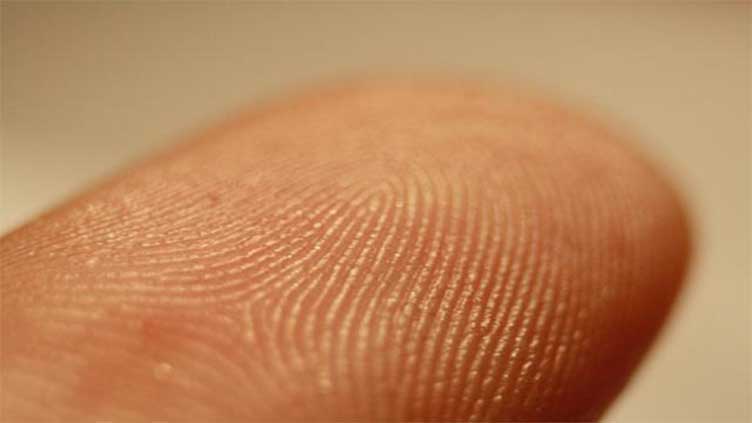Scientists use finger sweat to track drugs in bloodstream

Collecting fingerprint sweat can be performed without the need for special parameters
(Web Desk) - A new study from the University of Surrey aimed at tuberculosis detected antibiotics in the bloodstream using fingerprint sweat with almost the same accuracy as a blood test.
Tuberculosis is among the leading causes of death from an infectious agent, a new study opens, with an estimated 1.3 million deaths worldwide in 2022.
Drug-susceptible tuberculosis, however, is curable. However “approximately 50% of patients do not fully adhere to their prescribed lengthy regimen of antibiotics.”
In these cases, monitoring a patient’s treatment becomes crucial as any deviation from their prescription plan might inhibit its effectiveness and could lead to drug-resistant TB instead.
Scientists at the University of Surrey wanted to close this much-needed gap. They conducted a study to evaluate the best time to test for drugs in the bloodstream and determine how much medication a patient has taken.
Professor Bailey told Interesting Engineering that they decided to work with finger sweat due to their work in forensics. The study “explores what intelligence can be gained by analyzing the chemical composition of a fingerprint left at a crime scene.”
“A fingerprint is a convenient sample to take in clinical testing as it’s completely painlessly and non-invasively, without any loss of dignity from the patient.”
Professor Bailey’s team collected blood, saliva, and sweat samples from patients in hospitals during the COVID pandemic. While collecting blood and saliva proved challenging, they never had a problem collecting sweat.
They applied this insight to their most recent study into tuberculosis treatment. They gathered a sample pool of ten TB patients at the University Medical Center Groningen (UMCG) in the Netherlands.
“It was very simple to collect our samples,” Dr. Onno Akkerman from UMCG said.
“We asked patients to wash their hands, put on a nitrile glove to induce sweating, and then press their fingertips onto a paper square.”
Scientists detected antibiotics and the metabolite produced by ingesting the drug with 96 percent and 77 percent accuracy, respectively. They were able to identify the presence of the drug “between one to four hours after ingestion while the metabolized version showed up best after six hours.”
So the best time to test, their data suggests, would be 1-6 hours after ingestion of the drug.
Such information being the tips of doctor’s fingerprints stands to impact tuberculosis which follows a strict treatment plan.
“Doctors need to check whether tuberculosis patients are taking their antibiotics, Dr. Katie Longman, co-author of the study, reiterated. “It’s much quicker and more convenient to do that using fingerprints rather than blood.”
Sweat isn’t a biohazard like blood
Blood sampling requires specialist training and handling as blood is a biohazard due to its capacity to transmit disease.
On the contrary, collecting fingerprint sweat can be performed without the need for special parameters even around transportation and storage.
“This could ease the time pressure on a busy health service and offer patients a more comfortable solution,” Dr. Longman continued, as “blood tests are not feasible or desirable” in many cases. This novel technique could be really useful moving forward, she said in a press release.


